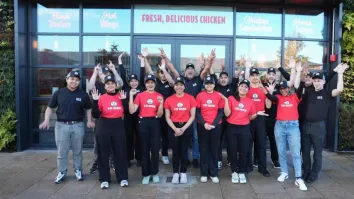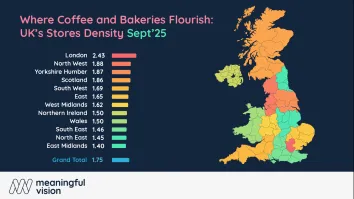
7 key tips on dealing with the rising unpredictability according to Revenue Management Solutions
Food price inflation rose to 9.3% in August, up by over 2% on the previous month.
In light of the latest figures released by the CGA Prestige Foodservice Price Index, Revenue Management Solutions (RMS), has created seven key tips for operators, to help them deal with the rising unpredictability.
Revenue Management Solutions’ chief research & development officer Sebastián Fernandez said, “Due to the fall in the pound since Brexit, restaurant operators are pulling back on expansion plans, and indeed may be forced to close outlets amid big rises in food and drink costs. If that wasn’t bad enough for operators, the rise in food costs is also combined with increased costs from the introduction last year of the national living wage for over-25s, in addition to rising business rates and mandatory pension contributions.”
He also noted that the southern Europe experienced some of their worst weather conditions in years. Floods lashed Spain which proved catastrophic for vegetable producers. Freezing conditions followed, hitting both Italy and Spain, with Spain seeing its largest snowfall in decades. New crops weren’t possible to plant, and the supply of more commodities was cut dramatically. Spain provides more than 25% of the UK’s vegetable imports.
“We are in extraordinary times, with price fluctuations occurring regularly, forcing restaurant operators to keep a close eye on food prices in order to manage their own profits accordingly.
“If the cost of a certain commodity is going up, an operator will know the impact on its overall profitability. It’s important to determine how to compensate for these higher costs, in a way that won’t drive customers away. After all, what’s the point of charging higher menu prices if fewer people are coming through your doors?”
Here are seven tactics that will allow restaurant operators to be ready to react quickly and thoughtfully as commodity costs change.
Know your data, know your customer
Everything you change on the menu should be based on a deep understanding of your customers’ behaviour, revealed by a restaurant’s EPoS data. Smart menu engineering comes from knowing how products trade with each other, driving demand to products with higher profitability when the situation allows.
Look ahead to price increases
It’s better to do several rounds of smaller menu price changes, than to make one dramatic change, which could drive customers away. If you know higher costs are coming later in the year, related to a certain item, make more frequent, smaller price increases to compensate ahead of time.
Know when it’s good to talk
In some cases, where cost increases relating to certain items are being highly publicised, consider telling customers why menu prices have gone up. However, take this approach sparingly.
Make your ingredients work for you
It is not possible to completely compensate for higher food costs by only adjusting menu prices. Consider re-engineering the menu to boost profitability, perhaps with new products or by dropping items with low demand and ingredients that consistently create issues from a cost perspective.
Polish your tin hat
When producer costs are stable and business is good, look for ways to push more favourable menu prices. The result: higher profitability that can provide a cushion for when you must compensate for future cost increases.
Know the limits
Remember that customers have thresholds in their minds for how much they want to pay within their chosen restaurant. Changing a £7.60 price to £7.99 usually results in less consumer pushback than changing it to say £8.10. And, if your customers are used to paying around £40 for a party of four, be careful not to push this to £50.
Get clever with smart promotions
Use your promotions wisely by thinking beyond simply driving customer traffic. Consider ways to use promotions to steer your customers to menu items that work best for your profitability, and away from items that are causing headaches.
The common thread in all these tips is the need to plan ahead, and to take an approach that is appropriately aggressive but in a smart way. To accomplish such planning, it’s important to have financial analysts on hand who understand the business, so you can assess the impact of producer price increases on your profitability and know how assertive you can be in response.























